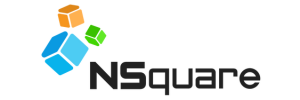
Demystifying Data Security Models in Salesforce: A Simplified Guide
Understanding data security models in Salesforce is crucial for businesses to safeguard their sensitive information effectively. Let's simplify the concept to ensure everyone grasps its significance.
Overview of Salesforce Data Security:
Salesforce employs a robust data security model, including Role Hierarchy, Profiles and Permissions, Object-Level Security, Field-Level Security, Record-Level Security, and Data Encryption, to regulate access to data stored within its platform, ensuring comprehensive protection against unauthorized access.
Role Hierarchy:
The Role Hierarchy establishes a chain of command within Salesforce, granting higher roles access to data owned by lower roles, ensuring efficient data access management while maintaining organizational structure.
Think of it as a pyramid where higher roles have access to data owned by lower roles.
For instance, a manager can view data owned by their subordinates, but not vice versa.
Profiles and Permissions:
Profiles determine what users can do within Salesforce, such as viewing or editing records.
Permissions within profiles control access to various functions and data.
Users are assigned profiles based on their job roles and responsibilities.
Object-Level Security:
Salesforce allows administrators to restrict access to specific objects (e.g., accounts, contacts) based on user roles and profiles.
This ensures that users only interact with the data they're authorized to access.
Field-Level Security:
Administrators can further refine access controls by restricting access to certain fields within an object.
For example, sensitive information like salary details may only be accessible to HR personnel.
Record-Level Security:
Salesforce employs sharing rules and criteria-based sharing to grant access to specific records based on predefined criteria.
This ensures that users can only access relevant records based on their roles and responsibilities.
Data Encryption:
Salesforce offers encryption mechanisms to protect data at rest and in transit.
Enhancing security by encoding sensitive information such as financial or healthcare data, thus mitigating the risk of unauthorized access or interception, and ensuring compliance with regulatory requirements.
Conclusion:
Data security in Salesforce is not a one-size-fits-all approach. By understanding the basics of its data security model, businesses can implement effective measures to protect their valuable information and maintain trust with their stakeholders.
Let's talk
Leave your details and one of our experts will contact you!





